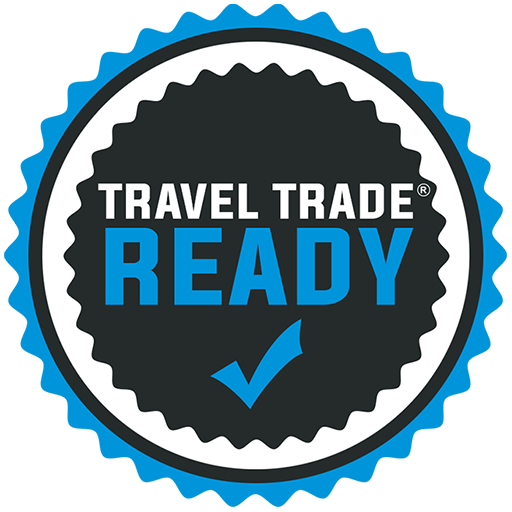What is Tourism Product Marketing And How Can We Help?
Tourism product marketing plays a crucial role in the travel and tourism industry, because it connects suppliers and buyers and helps them provide memorable experiences for tourists. Whether it’s promoting a cosy bed-and-breakfast, a thrilling guided tour, or a local cultural event, understanding how to market these products effectively is key.
This article will help you understand the basics of tourism product marketing, why it matters, and how Travel Trade Ready can simplify the process for both suppliers and buyers. So, read on to explore what tourism product marketing is and how you can use it to boost your business.
What is a Tourism Product?
A tourism product is any experience, service, or attraction that can be offered to travellers. This includes accommodations like hotels, restaurants serving local cuisine, cultural experiences such as festivals, and guided tours through beautiful landscapes. Tourism products are what makes a destination unique and appealing to visitors. They form the heart of a traveller’s journey and can create lasting memories.
Examples of Tourism Products
- Accommodation Providers: Hotels, bed-and-breakfasts, holiday cottages, hostels, and camping sites.
- Restaurants: From quaint cafés to fine dining establishments offering local delicacies.
- Cultural Experiences: Festivals, art exhibitions, historic site tours, and theatre performances.
- Guided Tours: Hiking, city sightseeing, wildlife safaris, and so on.
Primary vs. Secondary Products
Tourism products can be further classified into ‘primary’ and ‘secondary’ products. A primary product is the main reason a tourist chooses a particular destination. For instance, if a traveller visits Scotland primarily to explore its castles, then castle tours are the primary tourism product.
In contrast, a secondary product is something the tourist enjoys in addition to their main reason for visiting. For example, dining at a local pub may be a secondary product that adds to the overall travel experience, but isn’t the primary motivation for the trip.
Why Do People Buy Tourism Products?
People buy tourism products for a variety of reasons. Some seek new experiences, others want to learn about different cultures, and many simply wish to relax and enjoy nature. Understanding these motivations is essential in marketing in the travel industry, as it helps tailor products to meet the desires of travellers.
Key Motivators
- Novelty: Many tourists love exploring new places and trying activities they have never experienced before.
- Education: Learning about history, art, or wildlife often drives people to visit attractions such as museums, cultural centres, and nature reserves.
- Adventure: Activities like hiking, scuba diving, and skiing attract those looking for excitement.
- Family Bonding: Family-friendly tourism products like theme parks and zoos are popular among those travelling with children.
Factors Affecting Tourist Decisions
Several factors influence how tourists choose their products:
- Availability: If certain experiences – for example, seasonal festivals – are available during their visit, tourists are more likely to include them in their plans.
- Marketing: Effective tourism marketing ensures that travellers know about your offerings and are excited to experience them.
- Destination Appeal: Some destinations have unique attractions that draw visitors, such as the Northern Lights in Norway or wine tours in France.
What is Tourism Product Marketing?
Tourism product marketing involves promoting tourism services, experiences, and attractions to the right audience. It’s not just about advertising though – effective branding, good customer service and positive relationships also have a part to play in highlighting the product’s unique selling point.
Components of Tourism Product Marketing
- Advertising: Using digital platforms, travel brochures, and social media to reach potential customers.
- Branding: Creating a recognisable image or reputation for your product or service.
- Customer Relationship Management: Keeping in touch with previous visitors and encouraging them to return or recommend your product.
The Role of DMOs
Destination Marketing Organisations (DMOs) play a key role in the marketing of tourism products. They support local suppliers by promoting the destination as a whole, organising events, and providing resources for effective marketing. DMOs work with suppliers to help them align their products with what travellers are looking for.
Challenges in Marketing Tourism Products
Marketing tourism products comes with challenges. Seasonal demand can make it difficult to attract visitors year-round. Market saturation means standing out in a crowded market can already be tough, but in addition, changing tourist preferences require constant adaptation of marketing strategies to ensure that your approach remains effective.
Current Marketing Situation for Tourism Products
Understanding the current market situation is crucial for effective tourism product marketing. This involves analysing trends, evaluating competitors, and identifying areas where your product can fill gaps in the market
Trends in Tourism
Trends such as digital marketing, sustainability, and personalisation are shaping how tourism products are marketed. More travellers are looking for eco-friendly options, while technology has made online bookings and virtual tours increasingly popular.
Competitive Analysis
Assessing your competitors helps you identify what they offer, how they market their products, and what pricing strategies they use. This knowledge can guide you in differentiating your product and making it more appealing to potential visitors.
Identifying Gaps
Suppliers can identify gaps in their offerings by considering what travellers are looking for but may not be easily available or found in the market. Filling these gaps with unique experiences can give you a competitive edge.
How to Market Tourism Products Effectively
The effective marketing of tourism products effectively requires a well-thought-out plan that aligns with trends and targets the right audience. We’ll explore how to do that next.
Creating a Marketing Plan
Start by defining your target market and setting goals. What kind of tourists are you hoping to attract? Next, outline the marketing strategies you will use, such as social media marketing campaigns, website optimisation, and print advertising.
Leveraging Technology
Use online booking and social media platforms to reach a broader audience. An API like Travel Trade Ready allows suppliers to update information instantly, which ensures buyers always have access to the latest details.
Building Partnerships
Collaborating with other businesses (such as hotels and restaurants) can enhance your marketing reach. For example, a tour operator could partner with a local café to offer special packages to visitors.
How Travel Trade Ready Can Help with Marketing Tourism Products
Our platform simplifies tourism marketing for suppliers and buyers. It offers tools and resources to ensure that products are market-ready and easily accessible to trade buyers.
Bespoke DMO Tools
DMOs can use our platform to assess the travel trade readiness of their suppliers and provide support where needed. This helps create a network of suppliers that are well-prepared to work with buyers.
Supplier Benefits
Suppliers can access a range of marketing materials, test their alignment with different buyer types, and use the Instant Expert© template to create professional, trade-friendly documents.
Buyer Benefits
Buyers can efficiently search for trade-ready suppliers and tailor their marketing efforts using up-to-date information. Our platform’s comprehensive profiles and downloadable materials make it easier for buyers to find suitable products.
APIs for Seamless Integration
The Travel Trade Ready API ensures that suppliers’ information is updated instantly, allowing buyers to access the most current details whenever they need them.
Building Long-Term Relationships through Tourism Product Marketing
Building strong, lasting relationships with buyers, partners, and tourists is key to long-term success in tourism product marketing.
Engaging with Buyers
Use the platform’s opt-in features for direct communication with buyers, keeping them informed about your products and any updates.
Gathering Feedback
Feedback is invaluable for improving products and marketing strategies. Listen to what customer reviews and tourists say to continuously refine your offerings.
Frequently Asked Questions
Q: How can I tell if my tourism product is market-ready?
A: Use Travel Trade Ready’s assessment tools to evaluate your product against key buyer criteria and ensure it meets industry standards.
Q: What are the best ways to promote my tourism product?
A: Create a solid marketing plan, leverage online platforms, and use trade-ready materials to appeal to your target audience.
Q: How does Travel Trade Ready help in building partnerships?
A: Our platform connects suppliers with buyers and provides tools for collaboration, making it easier to form beneficial partnerships.
Q: How do buyers benefit from using the Travel Trade Ready platform?
A: Buyers can search for qualified suppliers, access up-to-date information, and download trade-ready materials, simplifying the decision-making process.
Conclusion
Tourism product marketing is essential for attracting visitors and providing them with memorable experiences. By understanding what tourists want, keeping up with trends, and using effective marketing strategies, you can successfully promote your tourism products. Travel Trade Ready is here to help both suppliers and buyers navigate the complexities of tourism product marketing, offering tools, resources, and support to ensure success.


